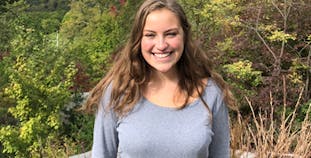Advance Online

Advance Online
A Career Inspired by Psoriasis
Avery Henderson shares her nearly 20-year experience living with pustular, plaque, and guttate psoriasis, as well as PsA, and how it guided her choice to tackle medical school.

Avery Henderson shares her nearly 20-year experience living with pustular, plaque, and guttate psoriasis, as well as PsA, and how it guided her choice to tackle medical school.
We use cookies to offer you a better experience and analyze our site traffic. By continuing to use this website, you consent to the use of cookies in accordance with our Privacy Policy.